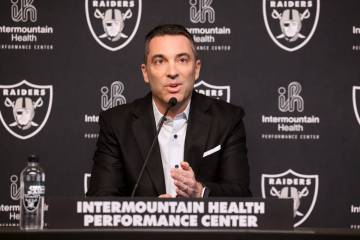Alfred Sloan’s vision led GM to success
The picture is a work of art if ever there was one.
In some ways it belongs in the White House, next to a guy named Kennedy. Or perhaps next to another man named Washington. Or Lincoln. Or Jefferson.
Here, on the highest floor of one of the tallest towers in a place still nicknamed the "Motor City," in a hallway layered with light-colored thick carpet, Alfred Sloan watches over all of them.
His gaze is constant.
Here on the 39th floor of Detroit's Rennaisance Center, in the heart of the automotive capital of the world, Sloan is immortalized on canvas with the richest of oils.
Day after day, his face sits in a perfect frame, next to all of the other former leaders, on the hallway wall leading to the board rooms at General Motors Corp.
He built this place. And in many ways, he built this town.
In all of the years of automobile making, no man has had a greater stake than the man who once formed GM into what GM is today.
Considered one of the top business minds of the 20th century, Sloan was at the helm of GM during the most dynamic time in the history of the automobile, when car production was rising at a volcanic rate and when organization was essential to survival.
Some call Sloan the first celebrity chief executive officer, along the lines of Donald Trump. Others maintain he changed the face of commerce forever.
Bill Gates, founder of Microsoft, said Sloan's autobiography is a must-have, especially "if you want to read only one book about business."
Whichever side your opinion falls, Sloan was a visionary.
Target "every purse and purpose" was Sloan's theory.
But it was much more complex than that.
He pioneered the concept of marketing and corporate leadership, selling GM as a symbol of the American dream. He met Ford's vehicle-for-everyone ideal with distinct brands -- Buick, Chevrolet, Oldsmobile and Cadillac -- in a range of colors, shapes, sizes and prices for every pocketbook. He encouraged aspiration. He perfected automotive financing.
And it all worked wonders.
In 1921, when Sloan took charge of General Motors, GM's share of the U.S. market was 13 percent. Ford had 56 percent. In 1927, after Sloan had completed and fully introduced the multidivisional operating management structure, the numbers were reversed.
But Sloan was about more than just numbers.
He excelled in customer care. He understood the principles of mass production. He believed in dealerships. And he lived each day with a simple vision.
"I never minimized the administrative power of the chief executive officer when I occupied that position," he once said. "I simply exercised that power with discretion; I got better results by selling my ideas than by telling people what to do."
Sloan's pace was always quicker than anybody else's.
Born on May 23, 1875, in New Haven, Conn., Sloan was the son of a coffee and tea importer. He studied electrical engineering at an early age before eventually graduating from the Massachusetts Institute of Technology at just 17.
Sloan began his professional career in a machine shop that made ball bearings. Within seven years he was running the company.
Less than 20 years later, in 1916, his company merged with United Motors Corp. and with another company to form General Motors Corp., which began making cars.
When Sloan first joined GM, the automaker was in immense financial trouble due to problems within the automobile industry and the lack of organization within the company.
"The corporation faced simultaneously an economic slump on the outside and a management crisis on the inside."
Sloan cleaned it up. He believed each division would be in charge of its own profits and have its own managerial staff. However, there would be an executive committee that would be responsible for overseeing each division and creating company policy.
It worked wonders and Sloan's career shot forward.
It only took seven more years for him to become vice president, then president and then, finally, chairman of the board by 1937.
Under Sloan, GM became famous for managing diverse operations with financial statistics such as return on investment.
Not everyone saw things his way. During the 1920s he phased out trams (in favor of GM buses) and had them burnt to discourage a reversal of policy for public transport. He later advised a decrease in bus services on cost-effectiveness grounds. Any influence this had on car purchases was, of course, incidental.
In these ways and others, Alfred P. Sloan continued to increase GM's profitability.
He made it a personal goal to visit dealerships across the country, at one point fitting a private rail car as an office and then traveling to each major city in the United States, visiting five to 10 dealers a day.
But what made Sloan one of the four business leaders of 20th century was his creation of an organized General Motors. And, above all, Sloan "motorized" America for GM, before retiring as chairman on April 2, 1956.
His place in history was cemented.
Every hard-working American wanted to own a Chevy, then maybe a Pontiac, then hopefully a Buick, then ultimately a Cadillac.
The formula was complete.
North America was hooked.
And a painting was being commissioned that would hang in the main office on the highest tower in this automotive capital.
Jason Stein is a feature writer with Wheelbase Communications. He can be reached on the Web at www.wheelbase.ws/mailbag.html. Wheelbase Communications supplies automotive news and features to newspapers across North America.





















